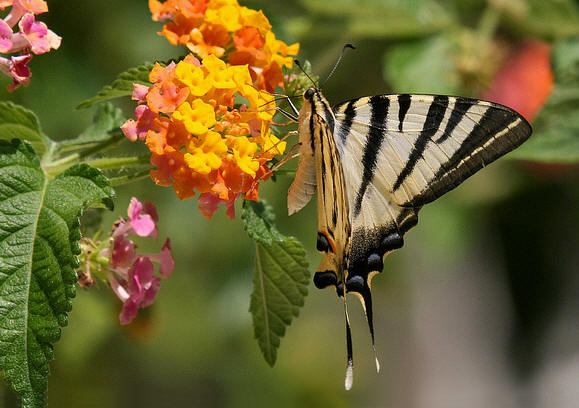 Iphiclides podalirius Zante, Greece – Martin Parr
Iphiclides podalirius Zante, Greece – Martin Parr
Introduction
The genus Iphiclides comprises just 3 species, feisthamelii, podalirius and the confusingly named podalirinus. The latter was once considered to be a subspecies of podalirius but is no recognised as a distinct species, and is restricted to China.
Iphiclides feisthamelii is considered by many workers to be a subspecies of podalirius. It is found in Spain, Portugal, southern France and north Africa. It differs from podalirius in having a paler almost white ground colour, and has a darker and broader submarginal band on the hindwings.
Iphiclides podalirius is distributed across most of central and southern Europe, excluding the British Isles, Ireland and Fennoscandia.
Its common name Scarce Swallowtail refers to the fact that it has on extremely rare occasions been recorded in Britain, e.g. in 1895 two specimens were captured, one in Devon and the other in Kent. These may however have been “fake” captures, a practice common in the Victorian era when collectors would do almost anything to raise their status among their contemporaries. There is no evidence that the species was ever a resident or regular migrant to the British Isles.
In Europe the butterfly is widespread and fairly common, although it has become much scarcer in recent years as a result of the removal of blackthorn bushes and hedges.
Habitats
This species occurs in warm and usually dry habitats where blackthorn grows in profusion. It is found from sea level to at least 2400m but is most often encountered below 1500m.
Lifecycle
The eggs are laid on the foliage of blackthorn Prunus spinosa, or less commonly on other Prunus species including amygdalus, avium, domestica, persica, armeniaca, mahaleb and padus. There are also records of larvae feeding on Pyrus communis, Malus domestica, Crataegus monogyna and Sorbus aucuparia.
Adult behaviour
Both sexes are usually encountered singly. Males visit seepages and patches of damp soil where they imbibe mineralised moisture. At such times they keep their wings firmly closed.
Females are more often seen nectaring at the flowers of trees and bushes including apple, pear, cherry, lilac and Buddleia, but also visit herbaceous plants including valerian, bugle, thistles, knapweeds, ragwort and stonecrop. When nectaring the wings are usually held at a 45� angle as shown in the photo above.
